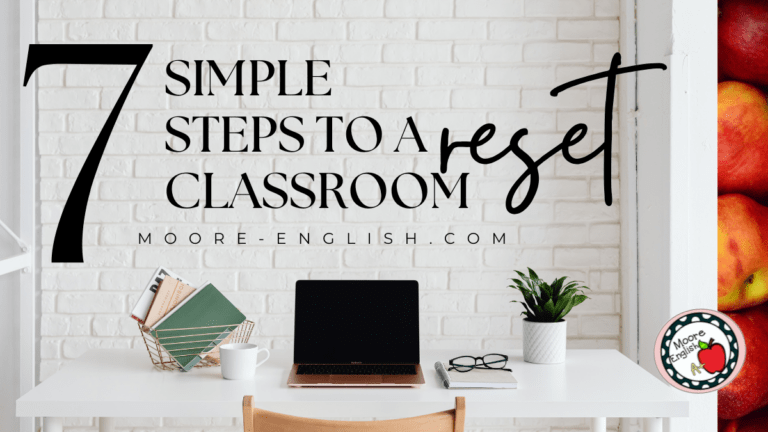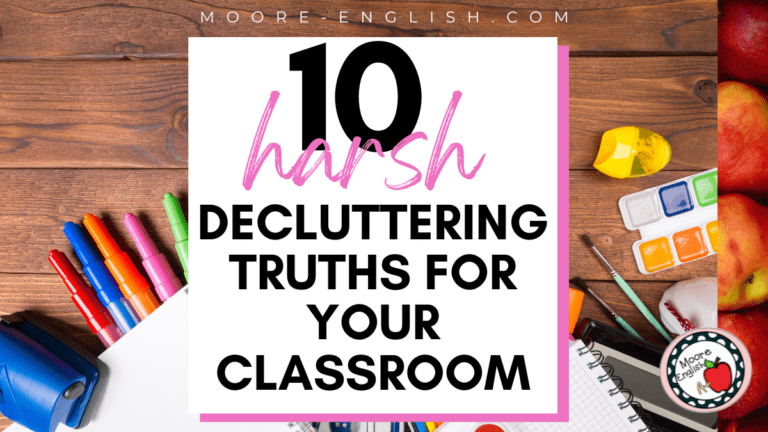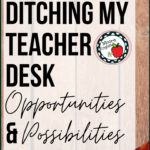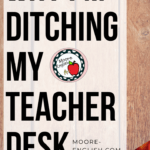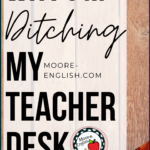Last year, I did not have my own classroom despite being a full-time classroom teacher. In other words, I traveled to other classrooms, and I learned a lot from the experience. As a result of traveling, I did not have a teacher desk. Occasionally, I would sit behind the desk of one of the teachers who graciously let me use their rooms. But sitting behind someone else’s desk is like wearing someone else’s underwear.
So I stopped sitting. And that’s when I realized I don’t need or want a teacher desk.

This post this post may contain affiliate links. Please read the Terms of Use.
My Desk Was Like a Bungee
Until I did without a desk, I didn’t realize how much time I spent going back to the desk. In the past, I would stand, move around my students, but then circle back to my desk. It was like I was wearing a bungee cord and being continually pulled backward.
What does that pattern signal to students? That there’s something at my desk more important than they are? That email is more important than human interaction? That if they just wait long enough I will eventually step back and let chaos reign?
My Desk Was Too Comfortable
A comfort zone is a dangerous thing. On one hand, an comfort zone can provide us with a safe space when things are hard. But on the other hand, staying in a comfort zone too long can prevent growth.
Living without a desk pushed me out of my comfort zone the way a mother robin may push a baby bird out of the nest. Without a desk, I had to try new strategies, including some strategies I thought I’d never attempt.
No Teacher Desk = More Movement
Without my desk, I became more mobile. I was moving in and among students more often, so I was better able to redirect attention, gather more formative data, and build stronger relationships with students.
Because I was modeling mobility, my students were also more comfortable moving around the classroom. When the time came to rearrange the furniture to facilitate a discussion or small group activity, students more readily stood up and moved around. When students were completing Collaborative Google Slides or Peer Revision tickets (get them here), they were more comfortable getting up and grouping and regrouping.
Epilogue: A Future Without a Teacher Desk
This year I will have a classroom although it will still be in a mobile unit. For this reason, I can’t really take any of the furniture out of the room. (Where would it go? Would it just sit on the patio? Yes, yes, it would.) Knowing that I wouldn’t be able to physically remove the teacher desk from my mobile unit, I just repurposed it. I turned it around so it faces outward, pushed it against the wall, and used it to build my May I Borrow Shelf. In this way, I took a piece of furniture designed for an adult and made it all about students.
Because I know I want to be more mobile in my classroom, I designed classroom goals that will encourage mobility. I think knowing I wanted to teacher without a desk led me to design these classroom goals that align with a desk-free, mobility-plus philosophy.
How do you encourage mobility in your classroom? What are your favorite ways to keep yourself and your students moving? Let us know in the comments!



